3.3.2. Section I
(1) Speaker 1: “Hey, how are you?”
Speaker 2: “I’m grand, thanks. How are you?”
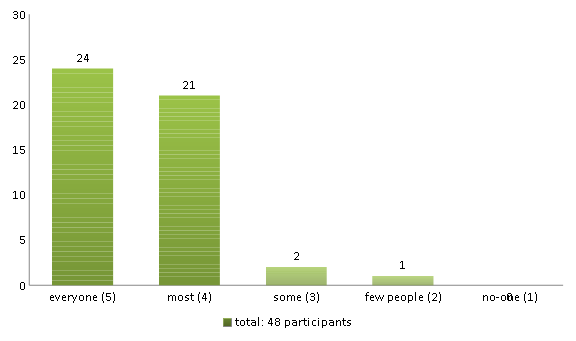

The first mini dialogue scores very high with an average of 4.41, which means that almost 95% of the participants have chosen that either everyone or most people would use grand in this context in everyday speech in Ireland.
(2) Speaker 1: “Will we meet up at 8pm in front of the cinema?”
Speaker 2: “Yes, sure that’s grand.”
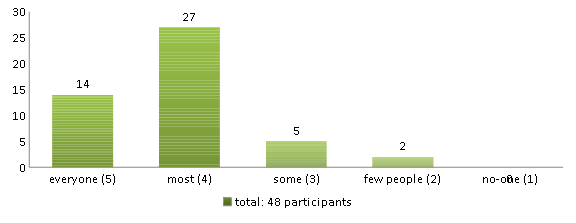
The second dialogue gains a high score, too. The standard deviation is very low with only 0.52 which indicates that the participants are unanimous regarding the usage of grand in this context. A low standard deviation is therefore a sign of reliable results.
(3) “This house was very spacious and grand.” (meaning “impressive”)
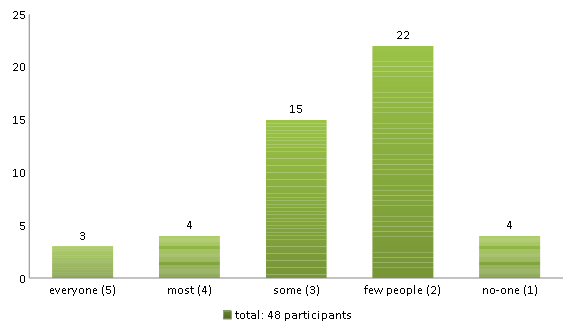
This sentence was supposed to be an unmarked structure which is not restricted to a specific dialect; thus, a high score was expected. However, compared to the previous sentences, this one has reached a rather low score with a tendency towards the midpoint which expresses that the participants are rather indifferent. An explanation for this unexpected result could be the register of grand in which it is used in this context. Asking the participant to think of everyday speech, grand meaning ‘impressive’ could be a too formal expression which is not commonly used in daily conversations.
(4) Speaker (1): “So tell me about last night’s party.”
Speaker (2): “Ah sure. It was a grand party.”
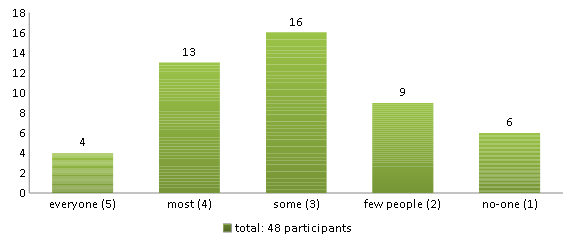
The attributive use of grand, as a modifier of party, scores lower compared to the previous predicative usages in (1) and (2). However, with an average of 3, it might not be as common as the examples (1) and (2), but can still be used in Hiberno-English.
(5) Speaker 1: “Do I look ok in those trousers?”
Speaker 2: “Of course, it’s a totally grand look.”
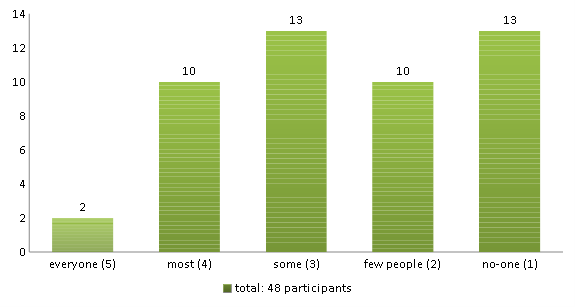
The attributive use of grand accompanied by an intensifying adverb, i.e. totally, provides a result which requires further examination because the standard deviation is rather high due to the equal distribution of answers between “some” (3) and “no-one” (1) as well as “most” (4) and “few people” (2). It can be clearly seen that the use of grand in this context is not as common as in examples (1) and (2). However, the relatively high number of people answering “most” and “no-one” seems contradictory. Therefore, the participants’ responses need to be examined individually as this inconsistency might indicate an irregular usage influenced by social factors or the regional background.
(6) “The newly elected mayor had grand ideas for bettering the social situation.” (meaning “ambitious, idealistic”)
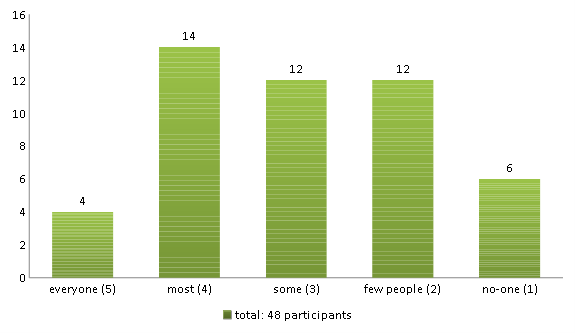
This sentence was supposed to be an unmarked structure, too. Therefore, a high score was expected. Referring to example (3), the result is also surprisingly unclear and, again, the formal register which interferes with everyday speech might be the explanation for this result.
(7) “You’re deadly right” (meaning “absolutely right”)
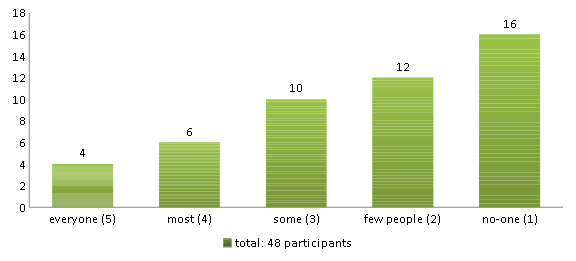
The adverbial use of deadly meaning ‘absolutely’ is rather uncommon in Hiberno-English as almost 80% of the participants tend towards rating neutral or negative regarding the commonness of this phrase.
(8) “The venom of that snake is quite deadly.”
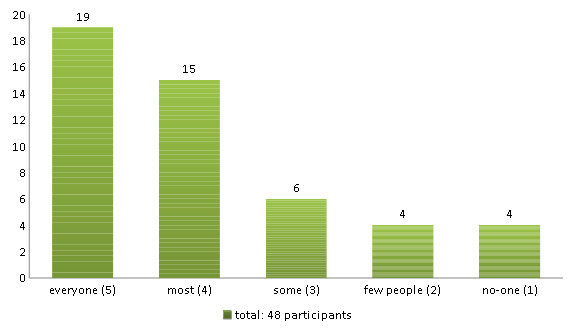
In contrast to (7), this unmarked use of deadly scores rather high, as expected, with an average of 3.85 and 83% of the participants choosing “everyone” – “some”.
(9) "The world is facing the worst outbreak of the deadly Ebola virus it has ever seen.”
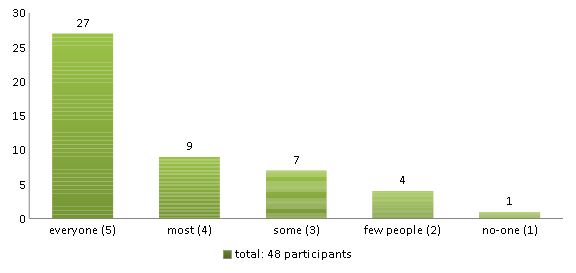
Again, this unmarked structure scores very high answer rates as the average is 4.18 which means that about 90% of the informants have either chosen “everyone”, “most” or “some”. Both unmarked structures (8) and (9) prove therefore that the scaling system of this survey is reliable.
(10) “It is a great town and the pubs are deadly.” (meaning “brilliant”)
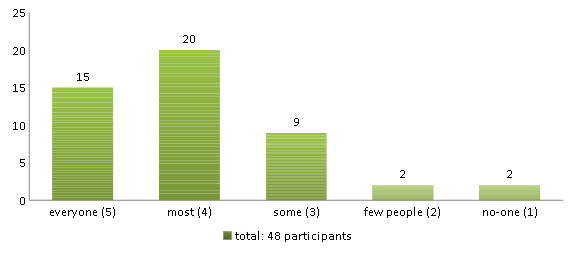
The particular Irish use of deadly meaning ‘brilliant’ scores very high with an average of 3.91, or 92% of the participants answering “everyone”, “most”, “some”. This result is comparable to the unmarked structure which indicates that deadly used as a predicative in this context is very common in every day speech in Ireland.
(11) “That was a deadly film.” (meaning “brilliant”)
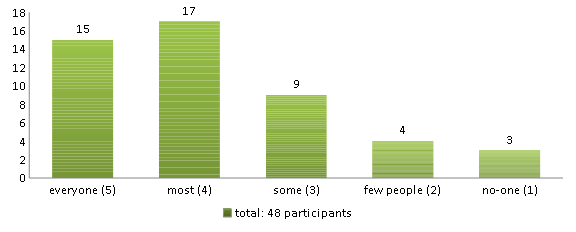
This attributive use of deadly in Irish-English gains again a very positive result regarding the commonness of this phrase with 85% of the participants choosing either “everyone”, “most” or “some”. Thus, using deadly as an attribute, describing something as brilliant is indeed common in Ireland.
(12) “Last night, I went to a party. It was absolutely deadly.” (meaning “brilliant”)
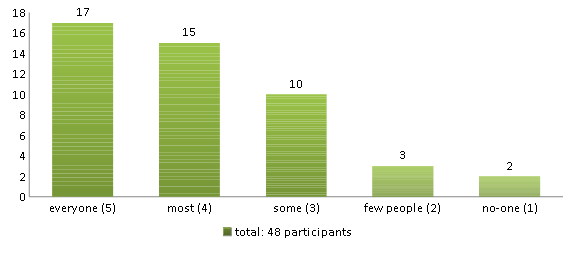
Finally, the attributive use in addition with an intensifier, i.e. absolutely, achieves a high overall number of positive answers as the average of 3.81, too. This indicates that the majority of participants have chosen “most” (4). Thus, the three parallel structures (10), (11) and (12), in which deadly has been used as an adjective meaning ‘brilliant’, are, compared to (8) and (9), as common as the unmarked structure. This leads to the conclusion that deadly meaning ‘awesome’ is used very often frequently in Hiberno-English.
Created with the Personal Edition of HelpNDoc: Easily create Web Help sites